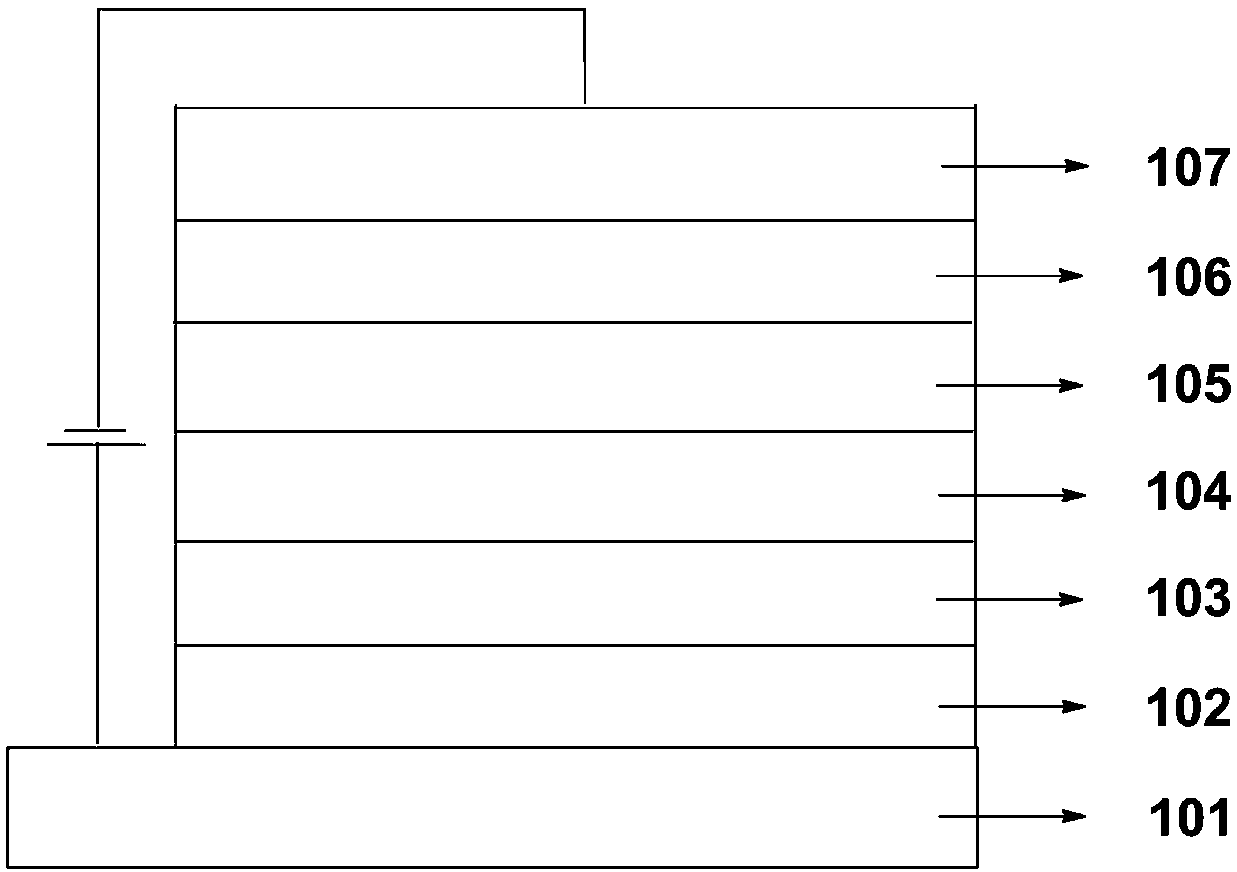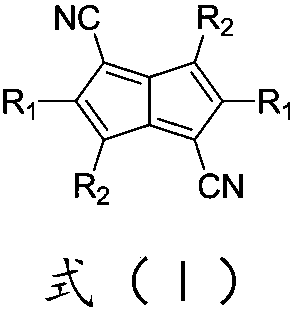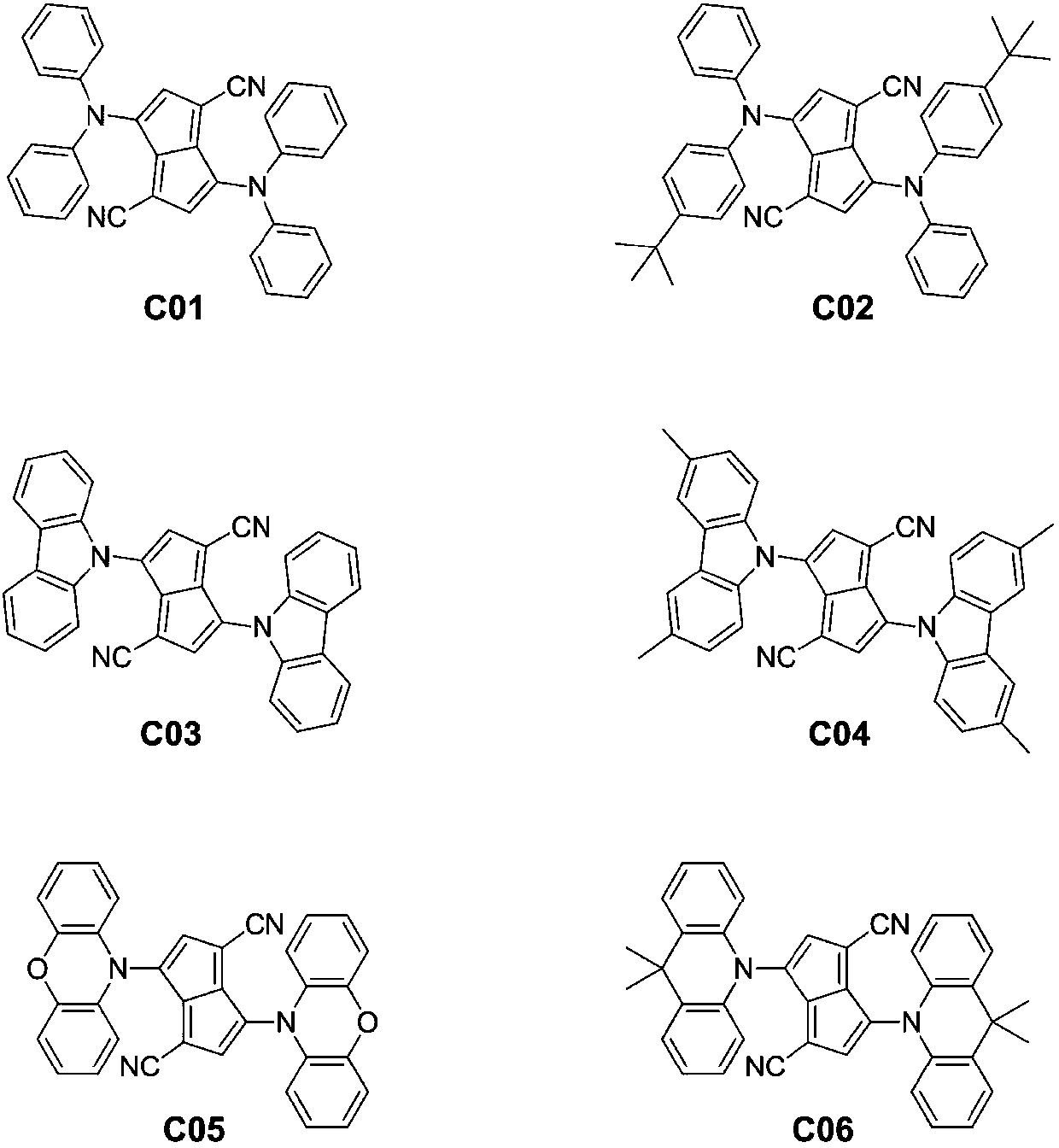Thermal activation delayed fluorescence material and application thereof
A technology of thermal activation delay and fluorescent material, applied in the direction of luminescent materials, materials of organic semiconductor devices, organic chemistry, etc., can solve the problems of limited application space of phosphorescent materials and high prices of phosphorescent materials, and achieve excellent device efficiency and high performance. Effect
- Summary
- Abstract
- Description
- Claims
- Application Information
AI Technical Summary
Problems solved by technology
Method used
Image
Examples
Embodiment approach
[0041]This embodiment is mainly aimed at the preparation method of the thermally activated delayed fluorescent material, and in combination with this method, some examples are listed, wherein, the steps of the method are as follows: (1) Add the raw materials and compound 1 to the organic solvent, in an inert gas Under the protection of 70-140 ℃ heat preservation reaction for 16-20 hours, cooling down, the reaction solution quickly passed through the basic alumina column, rinsed with o-xylene, after the solvent was removed, it was purified by silica gel column layer, and further used without Hydro-ethanol recrystallization to obtain compound 2;
[0042] (2) Add the compound 2, basic substance and raw materials obtained in step (1) into the solvent, and under the protection of an inert gas, add a catalyst to the system, keep the reaction at 0-200°C for 2-24h, and cool down , rinsed with deionized water, purified the obtained solid crude product through silica gel column chromato...
Embodiment 1
[0048] The preparation of embodiment 1 compound C01
[0049]
[0050] Preparation of compound 2:
[0051] In a 1L three-necked flask, add compound 1 (31.4g, 0.10mol), o-xylene (450g), 2,3-dichloro-5,6-dicyano-p-benzoquinone (50g, 0.22mol), nitrogen protection , heat up to 140°C, keep the temperature for 16 hours, cool down to 25°C, the reaction solution quickly passes through a 280g basic alumina column, rinses with o-xylene, and removes the solvent. The obtained crude product is purified by silica gel column chromatography, and the eluent is Cyclohexane, further recrystallized using absolute ethanol, obtained 21.2g of compound 2 fine product, yield 68.4%, high resolution mass spectrometry, positive ion mode, molecular formula C 10 h 2 Br 2 N 2 , the theoretical value is 309.8564, and the test value is 309.8567.
[0052] Preparation of compound C01: In a 250mL three-necked flask, add compound 2 (1.86g, 6mmol), diphenylamine (2.54g, 15mmol), potassium carbonate (3.3g, 2...
Embodiment 2
[0053] The preparation of embodiment 2 compound C02
[0054]
[0055] Using 4-tert-butyl-N-phenylaniline as raw material, according to the method described in Example 1, compound C02 was prepared to obtain 1.7 g of the target object, high-resolution mass spectrometry, positive ion mode, molecular formula C 42 h 38 N 4 , theoretical value 598.3096, test value 598.3091, elemental analysis (C 42 h 38 N 4 ), theoretical value C: 84.25, H: 6.40, N: 9.36, measured value C: 84.22, H: 6.42, N: 9.36.
PUM
 Login to View More
Login to View More Abstract
Description
Claims
Application Information
 Login to View More
Login to View More - Generate Ideas
- Intellectual Property
- Life Sciences
- Materials
- Tech Scout
- Unparalleled Data Quality
- Higher Quality Content
- 60% Fewer Hallucinations
Browse by: Latest US Patents, China's latest patents, Technical Efficacy Thesaurus, Application Domain, Technology Topic, Popular Technical Reports.
© 2025 PatSnap. All rights reserved.Legal|Privacy policy|Modern Slavery Act Transparency Statement|Sitemap|About US| Contact US: help@patsnap.com



